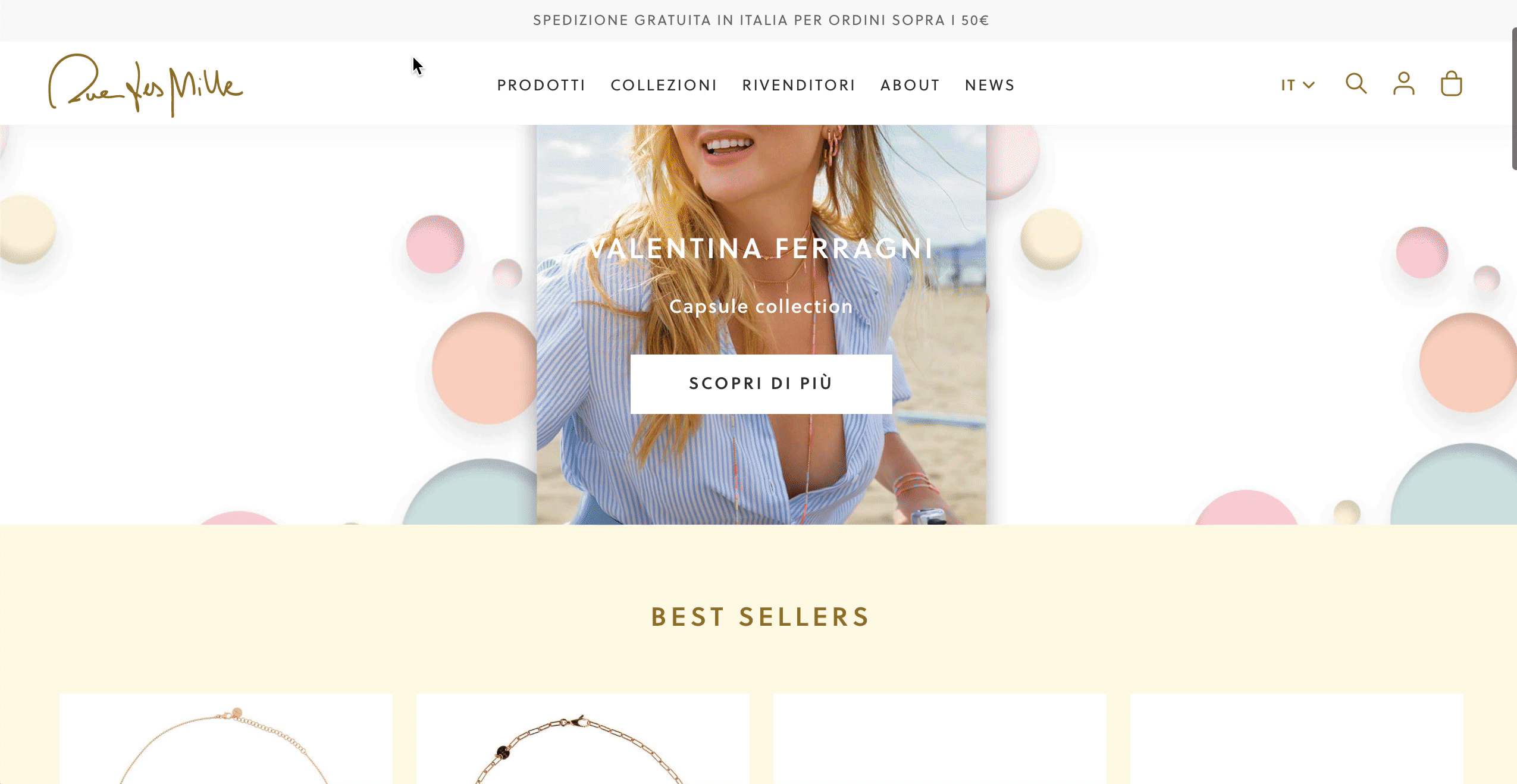Headless commerce is the future of e-commerce
July 03, 2019
Gianluca Chiap
At this year's Shopify Unite (the annual Shopify partner and developer conference), there was a talk dedicated to headless commerce, which has generated a lot of interest. We want to take this opportunity to give our insight on the topic.
What is a headless commerce and why does it matter
To put it as simple as possible
A headless commerce is an e-commerce where the front-end (the head, e.g. the website) is decoupled from the backend infrastructure (e.g. Shopify).
This is a clear breaking point from the traditional approach where frontend and backend are instead tightly coupled in a monolith.
Even if this new architecture seems like a small change, it leads to a cascade of consequences that, if exploited in the right way, can dramatically improve every aspect of your e-commerce, from the development process to the final user experience.
In this article we are going to discuss some of the advantages we have experienced by going headless and at the end we will discuss a case study to give a concrete feedback on the concepts we have presented.
Flexibility and technology lead
The monolithic structure of traditional commerce systems carries some shortcomings that cause chronic inability to keep up with the newest technologies. This leads to a number of constraints that limit the freedom of developers and slow down the overall business process.
Technology moves extremely fast and by choosing to go headless developers regain the complete control over the digital storefront with the freedom to choose the best technology available for each use case.
Having the possibility to choose technologies translates into a competitive advantage that eventually will give you a technology lead over your competitors.
This technology lead means a faster development cycle where it’s easier to test new features, remove old ones and experiments with changes, with a shorter delay from concept to market. Going to market faster means that you will be offering new features and improvements before your competitors.
This situation gives us the agility required to quickly adapt to the new users behaviour and market trends.
Otherwise if we are constantly slowed down by the technology debt we will steadily lagging behind the competition.
Technology leads means that you can move faster than your competitors
An example: Native mobile experience with Progressive Web Apps
It’s quite common that mobile users generates a fair amount of traffic on an e-commerce. It’s however quite common that they have an experience that is far from being as pleasant as on desktop, or native application. Slow navigation and not optimized UX are some of the worst possible scenario for mobile users.
Giving mobile users the best possible experience should be a top priority of every e-commerce
Developing a native mobile app is not something that every business can afford. But luckily a native application is not always necessary to give users a native experience. By using a headless solution is possible to transform the entire e-commerce in a Progressive Web App (PWA).
Progressive Web Apps is a new technology that allows to provide a native app like experiences for the users. They work just like native apps but they drastically lower the cost for a native experience.
PWAs usually produce a higher user engagement and conversions which is the reason why many e-commerce are adopting this technology to grow their businesses.
Customization and improved UX
The limited flexibility of the traditional commerce greatly reduce the design choices available.
Not customizing your commerce to follow user behaviour is one of the critical problems that can directly affect the conversion.
If you want your e-commerce to stand above your competitors you must associate your brand with a unique and remarkable experience. This means understanding how your users behave and build UX around this knowledge, instead of forcing the users to follow a standard design.
To be effective, the UX should be customer-centered, tailored on the customer behavior, not the opposite.
Headless gives you complete control over the user experience with endless customization possibility to build a user experience from scratch free from any constraints.
What about speed and SEO?
A headless solution is faster, always.
If someone has experience the opposite, he is not doing it right. A faster website means a better SEO score.
But most importantly page speed directly affects conversion. If your users have to wait a couple of seconds every time they change page or view a new product, there is a good chance that they will leave the e-commerce sooner.
Don't test users' patience
In 2016 Amazon released one of the first studies about the correlation between site speed and conversion rate. They showed that for every 100-millisecond delay in page load lead to a 1% loss in sales.
A fluid and responsive experience improves the conversion rates
Should my e-commerce upgrade to a headless solution?
As always it depends. There are a lot of factors to consider before deciding to embrace a headless solution. First of all the budget. Rewriting your entire frontend can be quite costly and you must be sure that your business will benefit from it. You should make a precise analysis of the problems your e-commerce is having and if some of the problems are:
- a slow website
- a non optimal user experience, particularly for mobile user
- having the feeling of lagging behind competitors
- An overall slowness to release new features or change existing ones.
headless can be a good investment for your business. If your e-commerce does not have users in the first place, there are probably more deep problems to fix before considering the change.
If you are starting a new e-commerce from scratch we strongly suggest to consider a headless solution since it provides an overall better experience for both users and developers
Case study: Rue Des Mille
Rue Des Mille is an Italian brand of prêt-à-porter jewelry. We dealt with the renewal of their e-commerce adopting a headless solution. We have rebuilt the website from scratch, using a third-party CMS, in combination with Shopify, that powers our custom made front-end

The first thing you notice about the commerce is that it’s extremely fast. Load time between pages is almost non existent

PWA optimized
As we said before, one of the advantages of using a custom made front end is the possibility to quickly adopt new technologies. For example Rue Des Mille is also a PWA, greatly improving the mobile experience.

If you want more information about this project you can check this post
Why we decided to invest in headless
At inkOfPixel we firmly believe that headless commerce will play an important role in the future of e-commerce and we have decided to fully embrace it.
We hope that this post has helped you understand why we are so passionate about this new paradigm.
Let us know what you think